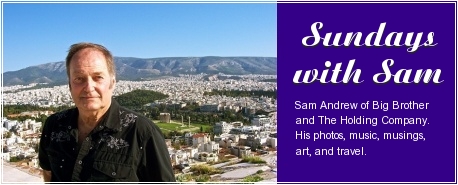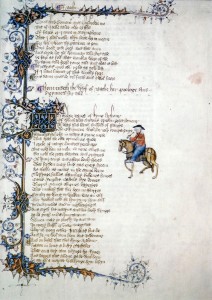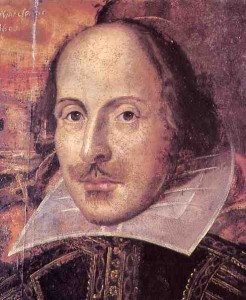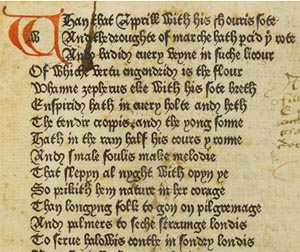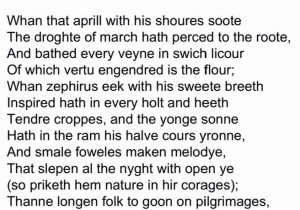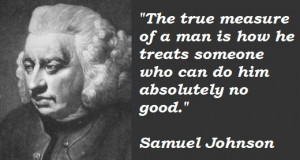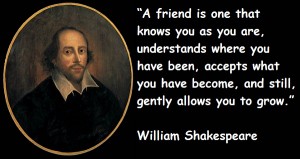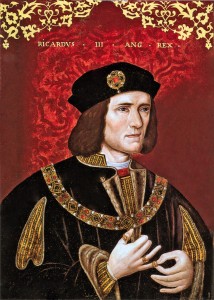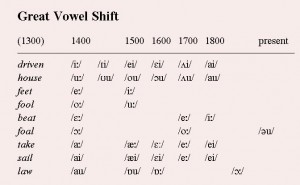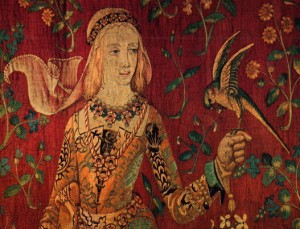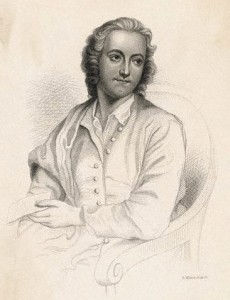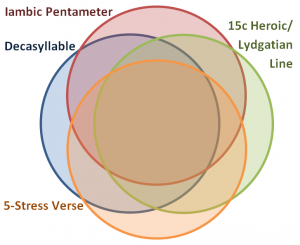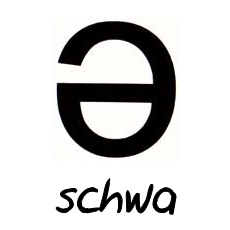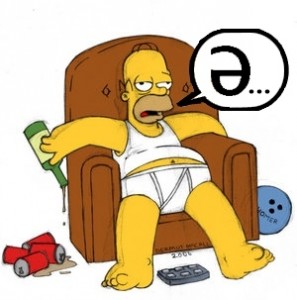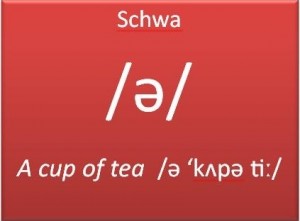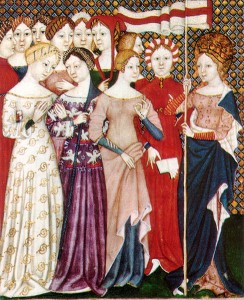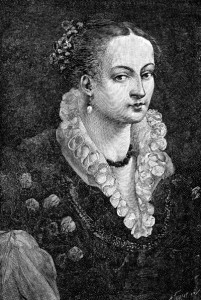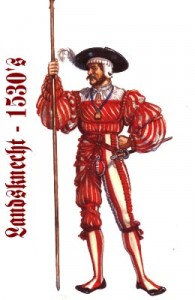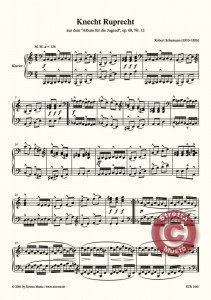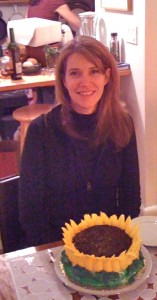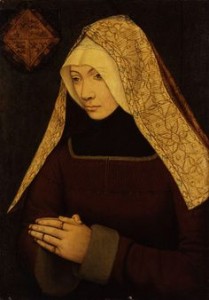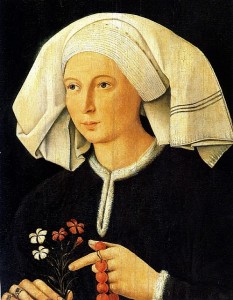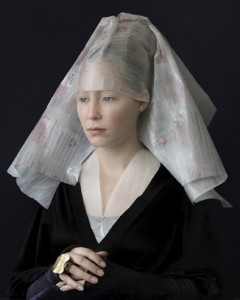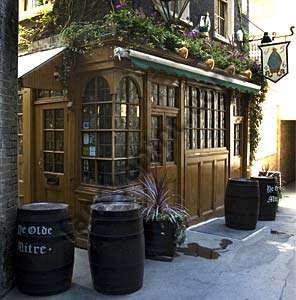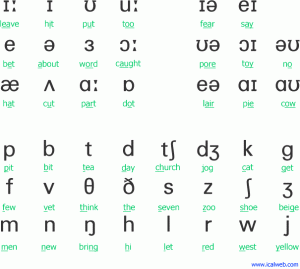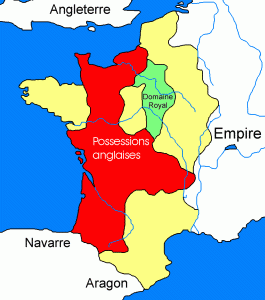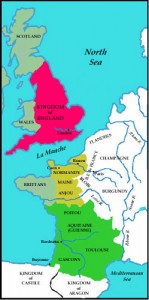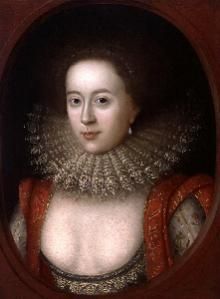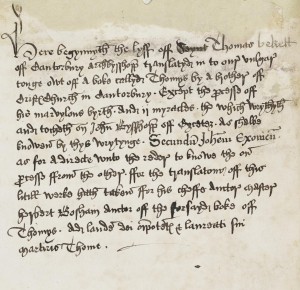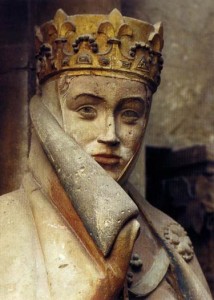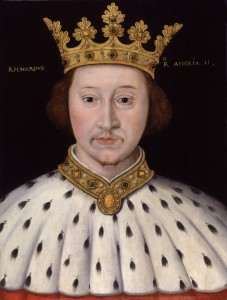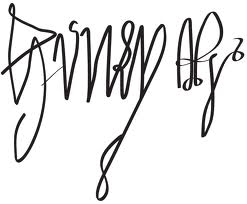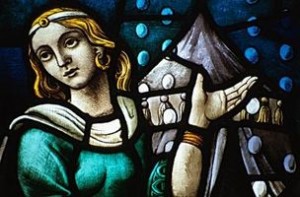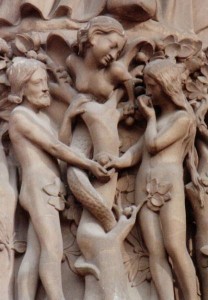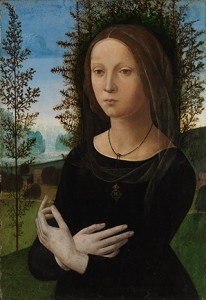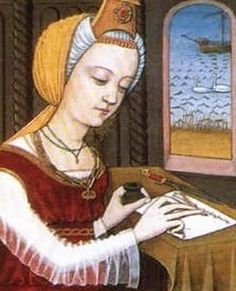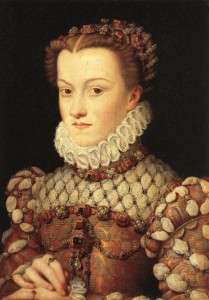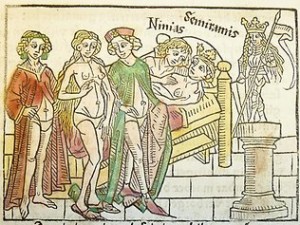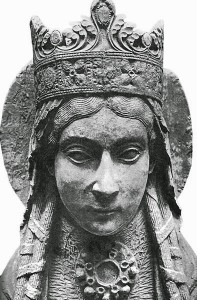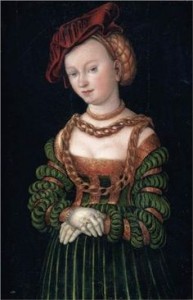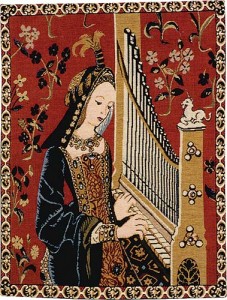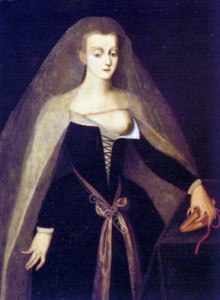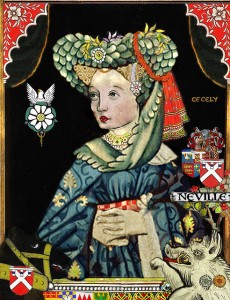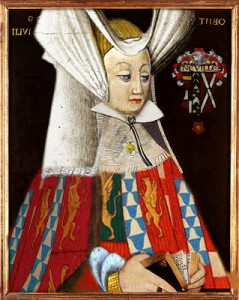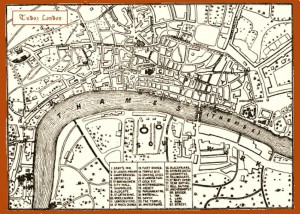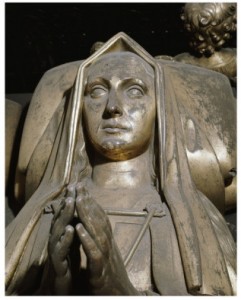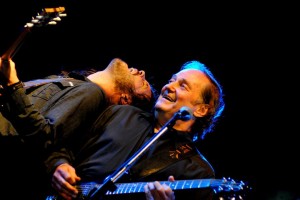Middle English, the language that Chaucer used, was spoken in the three centuries between 1175 and 1475. It is really quite a beautiful version of English.
We understand the language of Shakespeare when we hear it from the stage and especially when we read it. It’s our language. It is early modern English. When we hear or read “They told me that to make her fall in love I had to make her laugh, but when she laughs, I’m the one who falls in love,” we nod in recognition and don’t even think about the language.
Geoffrey Chaucer only lived two centuries before William Shakespeare and yet to understand Chaucer most of us would need an interpreter. If we heard someone say, “Whan that Aprill with his shoures soote the droughte of March hath perced to the roote, thanne longen folk to goon on pilgrimages,” with the pronunciation of that time, where the vowels are pronounced as in Italian or Spanish, Rs were trilled or flapped, and words like droughte are pronounced as in German, it might take us a while to realize that we were being told that When April with its sweet showers has pierced the drought of March to the root, then folks long to go on pilgrimages.
How did the language change so radically in a mere two centuries? After all, we read English written in the 18th century as easily as we read this morning’s newspaper.
Shakespeare lived four centuries ago and we understand him.
What happened was that there was a major change in the pronunciation of the English language between 1400 and 1700. Linguists call it The Great Vowel Shift.
The main feature of the Great Vowel Shift was that a, e, i, o and u changed from being pronounced as they are in Italian or Spanish to being pronounced as they are today.
In the 14th century, ‘time’ was pronounced team(a). ’House’ was pronounced hoos(a). The word ‘feet’ was pronounced to rhyme with fate. ‘Fool’ was pronounced the way we say foal today. The vowels at that time were pronounced more or less as Lucrezia Borgia would have pronounced them.
The word ‘take’ rhymed with how we say clock a tock a. That final ‘e’ that is silent now, was often pronounced in Middle English.
For a long time people thought that Chaucer, while an interesting storyteller, was imperfect and unschooled because his poetry wouldn’t scan. They thought this because they didn’t realize that the final, unaccented e was pronounced in Chaucer’s time. It sounded like an unstressed -a.
Readers of The Canterbury Tales thought that Chaucer’s rhymes were rude and crude because they just didn’t ‘read’ right.
Even in the sixteenth and seventeenth centuries, however, there were perceptive readers who understood that maybe we were not reading The Canterbury Tales the same way that someone in the fourteenth century might have.
When you read aloud the line Whan that Aprill with his shoures soote and pronounce the final -e after shoures and soote, all of a sudden the line scans. It becomes a five beat line, a decasyllable.
Linguists call this unaccented final -e or final -a sound a schwa. It might surprise you to realize that the schwa is the most common vowel sound in English. In the International Phonetic Alphabet (IPA) the schwa is written as an inverted e.
Uh, I’m going to go get a pizza. There are three schwas in this sentence. Uh, a, and the final a at the end of pizza.
The schwa is the only phoneme with its own name.
Thus, in linguistics, a schwa is an unstressed and toneless neutral vowel sound in any language, often but not necessarily a mid-central vowel (rounded or unrounded). Such vowels are often transcribed with the symbol ?, regardless of their actual phonetic value. An example in English is the a in about. An example in Italian is the a in festa.
Not all final -e‘s in Middle English were pronounced.
Look at the words not and note. The -e is not necessarily pronounced here, even in Middle English. It only shows that the -o is lengthened. This is called a scribal e.
In Middle English the word knight was pronounced so that you could hear the k and the n, very much as Knecht (servant, farmhand) is pronounced in German today.
Actually, knight and Knecht were once the same word.
In Middle English Knight was pronounced something like Kaneecht where the ch is pronounced as in Scotland, or like the ch in German nicht.
Similarly, gnaw was pronounced gun awe. You hear the g and the n, as in German Gnade (favor, grace, mercy). Or as in Saginaw.
There were several archaic graphemes in written Middle English that had survived from Old English.
| Æ æ |
|---|
This character, called ash (æsc) , represents the ‘short a’ sound as in cat and still survives in the International Phonetic Alphabet.
| Ð ð |
|---|
Eth. In Anglo-Saxon (Old English) there was a way to write the sound of the th in that (ðæt ) and also a different way to write the th in thorn þorn (Þ, þ). They are two completely different sounds, and one of the many difficult aspects for new English learners is to master these completely separate ideas that we take for granted.
| Ð ð |
|---|
This is eth, where the th is pronounced as in the.
| Þ þ |
|---|
The Þ is called thorn, where the th is pronounced as in think. These graphemes are very useful for explaining the difference between then and thin to someone whose language doesn’t have these sounds. A French person, for example.
I’m sorry that we don’t still employ these useful characters, but they are easily confused with d and p, so perhaps it is best that they are not in our alphabet today.
In early modern English, the word the was often written in abbreviated form ![]() – (ye). This is why you see Ye Olde Publicke House, for example. That Ye was never pronounced yee, but was always pronounced the despite all of the jocular and mistaken y pronunciations that we hear today.
– (ye). This is why you see Ye Olde Publicke House, for example. That Ye was never pronounced yee, but was always pronounced the despite all of the jocular and mistaken y pronunciations that we hear today.
| ? ? |
|---|
The letter yogh (? ?; Middle English: yo?) was used in Middle English. It was derived from the Old English form of the letter g. This is the grapheme that was used to write the sound of that gh in the word knight that sounds like the ch in German nicht. The word night was written ni?t in Middle English. The droughte in the droughte of March is written with a ?.
| ? ? |
|---|
This grapheme is called wynn (also spelled wen, ?ynn, or ?en) and it was used in Middle English to represent the sound /w/ as in west.
The International Phonetic Alphabet
In the late period of Middle English (late 1300s), the wealthy and the government began to switch from Norman French to English again, although Norman remained the dominant language of literature and law until the 14th century, even after the loss of the majority of the continental possessions of the English monarchy.
The new English language that now emerged did not sound the same as the old, and began to sound more like the language we see in our daily lives. If you are struggling to learn this English Language that has been formed over centuries, you might want to check out something like Effortless English, as they might be able to help you learn the language quickly and easily.
There were changes in vocabulary, and the complex system of inflected endings in Old English was gradually lost or simplified in the dialects of spoken Middle English.
These changes were gradually reflected in the increasingly diverse written forms of Middle English.
The loss of case endings was part of a general trend from inflections to fixed word order that also occurred in other Germanic languages and also a bit earlier, perhaps, in the Romance languages.
English had, after all, been the language of the vast majority of the English people throughout the middle ages. Only a small group of the nobility spoke Norman French. Changes in Middle English came from the people, not from the aristocracy. From how people actually spoke, rather than from books or professors.
Norse immigrants to England also had a great impact on the loss of inflectional endings in Middle English, because, although Norse- and English-speakers could understand each other, the Norse-speakers’ inability to reproduce the ending sounds of English words influenced Middle English’s loss of inflectional endings.
The Late Middle English period was a time of upheaval in England. After the deposition of Richard II in 1399, the House of Plantagenet split into the Houses of Lancaster and York, whose antagonism culminated in the Wars of the Roses (1455–1487).
There was unity in England only with the coming of the Tudors to the throne under Henry VII, the victor in the battle of Bosworth Field, the last king of England to win his throne on the field of battle.
During this period of social change, with new rulers coming into positions of power, some of them from other parts of the country or from lower levels in society, many linguistic changes occurred.
In 1473, William Caxton printed the first book in English, Recuyell of the Historyes of Troye.
The English language was changing rapidly in Caxton’s time (15th century) and the works he was given to print were in a variety of styles and dialects. Caxton was a technician rather than a writer and he often faced dilemmas concerning language standardization in the books he printed.
Caxton is credited with standardizing the English language (that is, homogenizing regional dialects) through printing.
This standardization facilitated the expansion of English vocabulary, the regularization of inflection and syntax, and widened the gap between the spoken and the written word.
Later, Richard Pynson, who started printing in London in 1491 or 1492, and who favored the Chancery Standard, was a more accomplished stylist and consequently pushed the English language further toward uniformity.
Chancery Standard was largely based on the London and East Midland dialects, since those areas were both political and demographic centers of English society.
However, Chancery Standard used other dialect forms where they made meanings clearer. The northern “they”, “their” and “them” (derived from Scandinavian forms) were used rather than the London “hi/they”, “hir” and “hem.” This was perhaps because the London forms could be confused with words such as he, her, and him. (However, the colloquial form written as “‘em”, as in “up and at ‘em”, may well represent a spoken survival of “hem” rather than a shortening of the Norse-derived “them”.)
The clerks who used Chancery Standard would, of course, have been familiar with French and Latin, which must have influenced the forms they chose.
Chancery Standard was not the only influence on later forms of English. Its level of influence is disputed and a variety of spoken dialects continued to exist.
Chancery Standard did, however, provide a core around which Early Modern English could form.
By the mid-15th century, Chancery Standard was used for most official purposes except by the Church, which still used Latin, and for some legal purposes, for which Law French and some Latin were used.
Chancery Standard was disseminated around England by bureaucrats on official business and slowly gained prestige.
With a standardized, printed English Bible and Prayer Book being read to church congregations from the 1540s onward, a wider public became familiar with a uniform language, and the era of Modern English began.
See you next week?
Ben Nieves Sam Andrew Bosnia 2011
_________________________________________________
